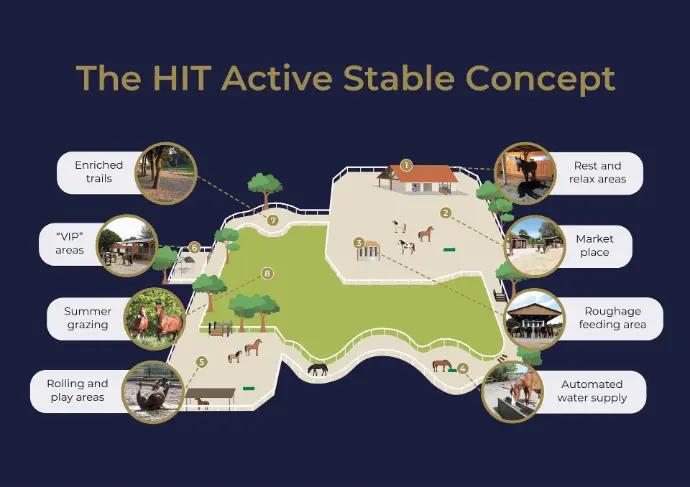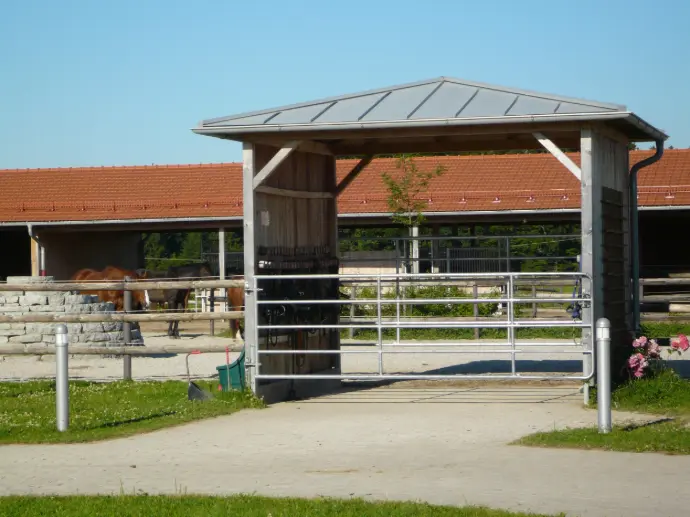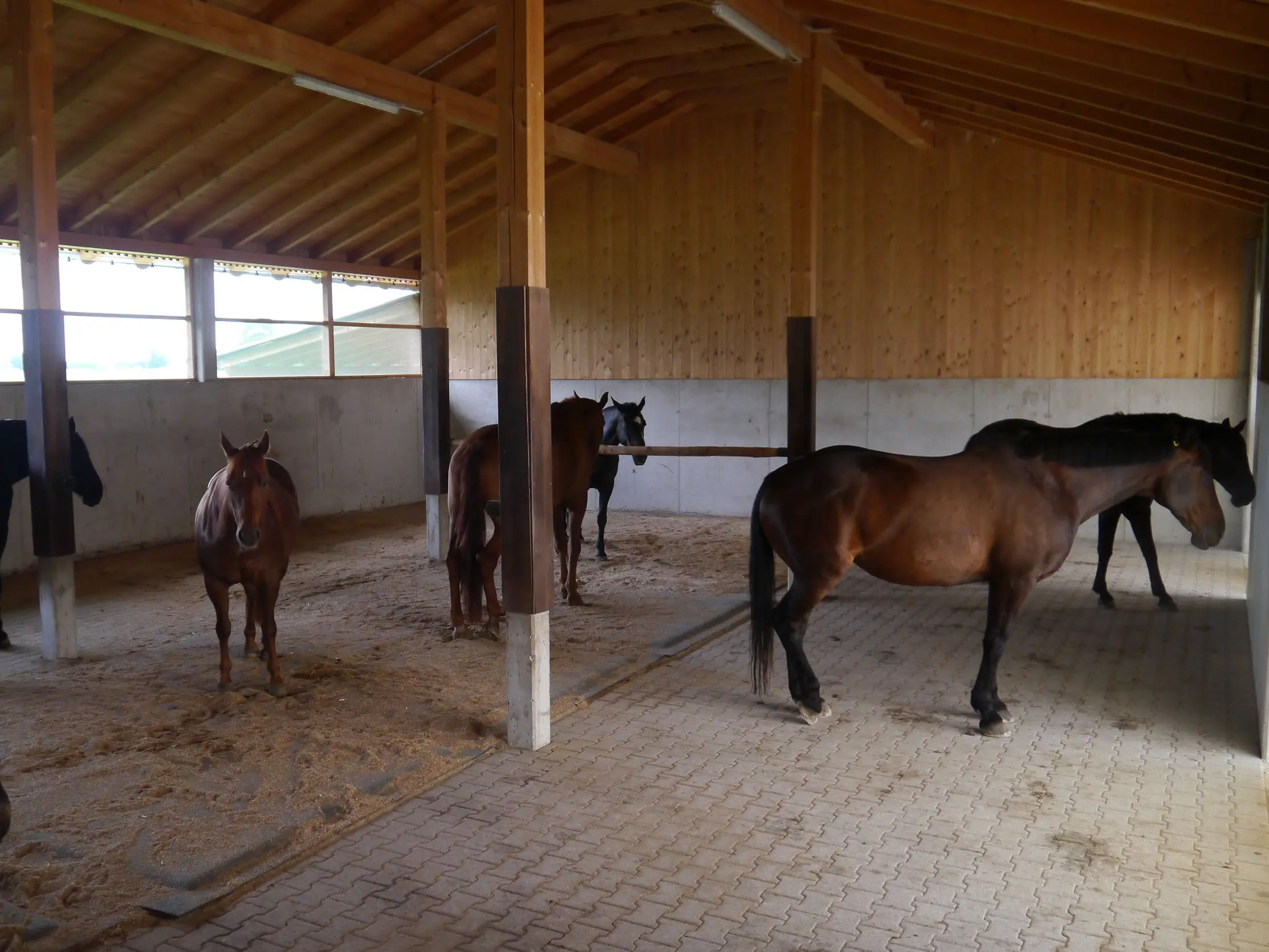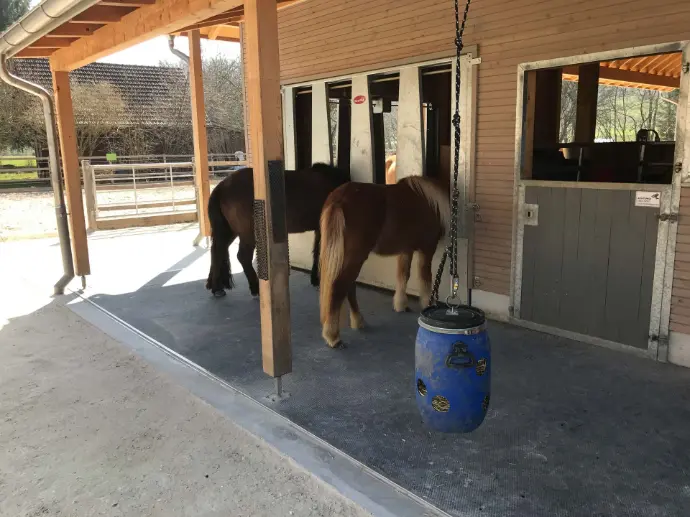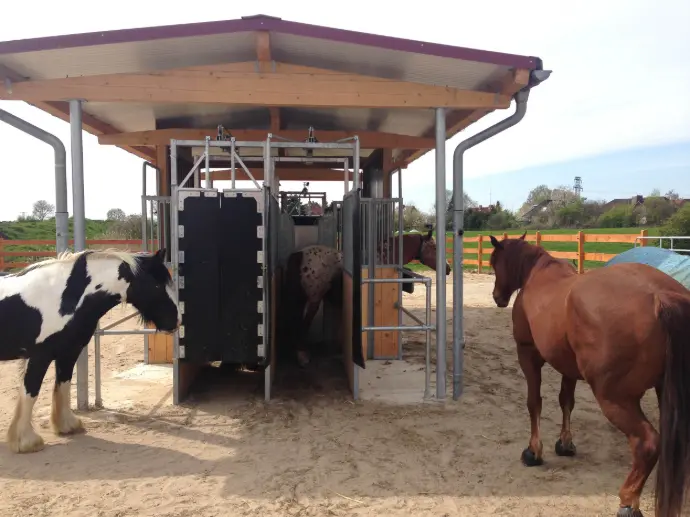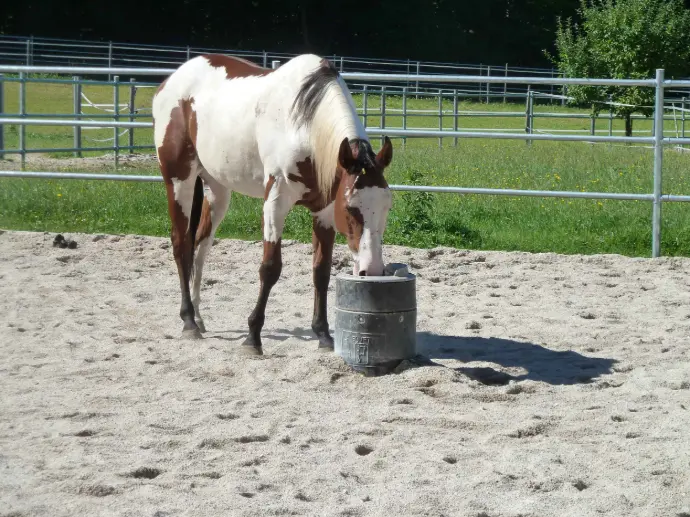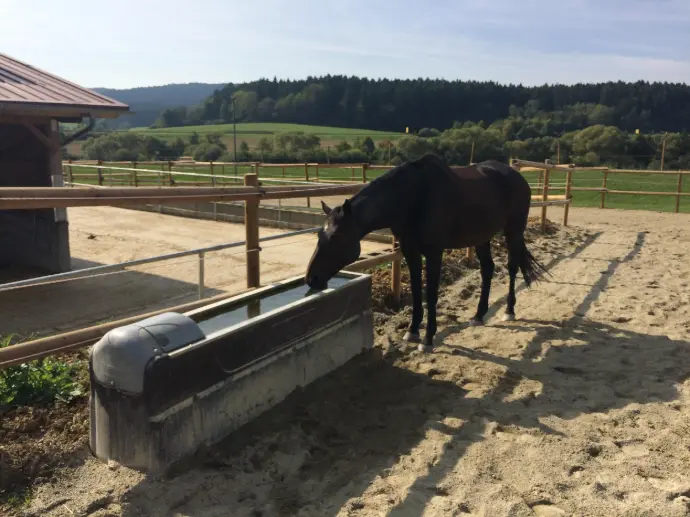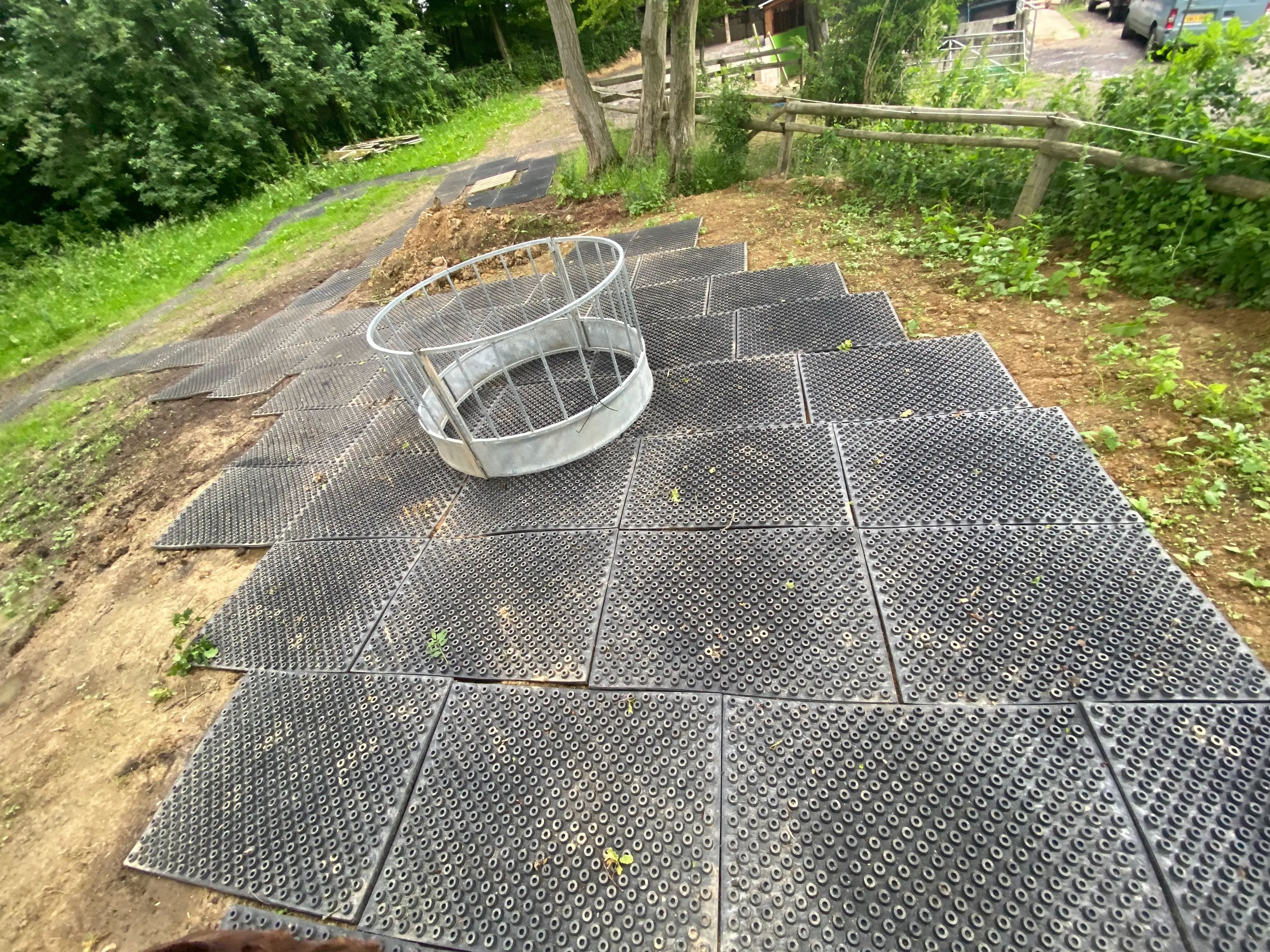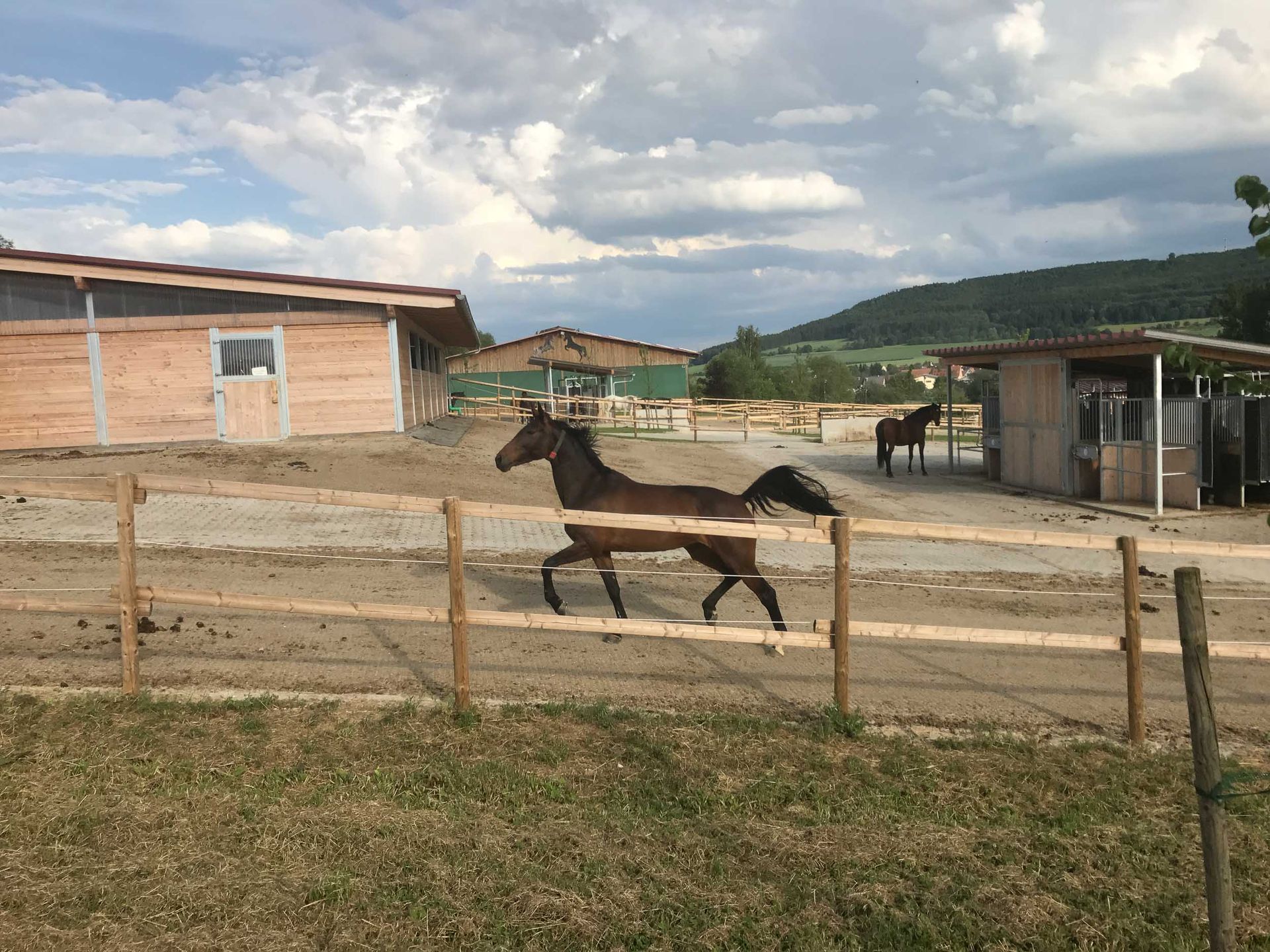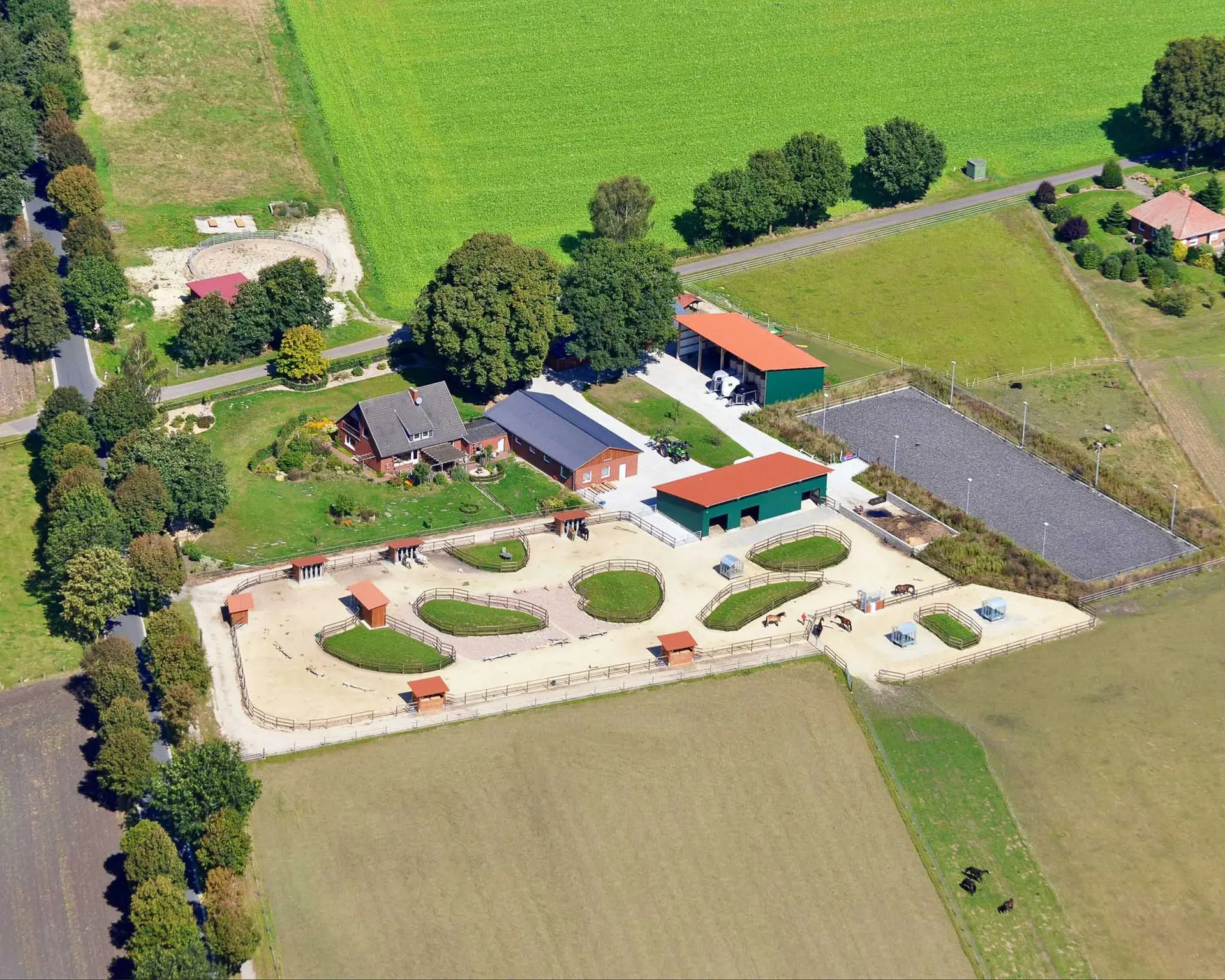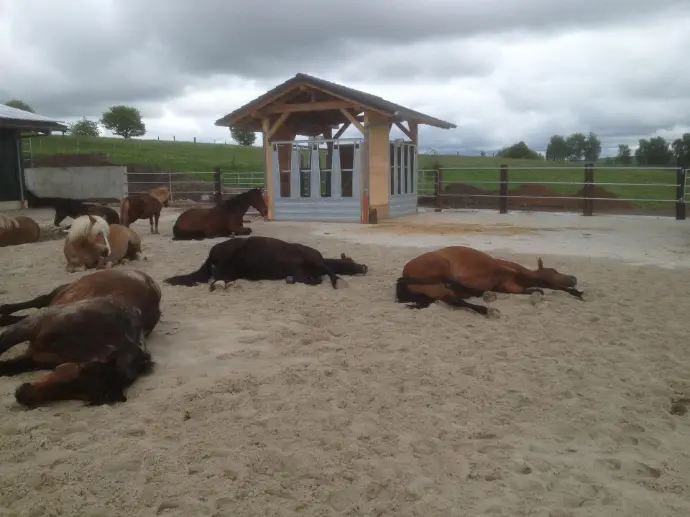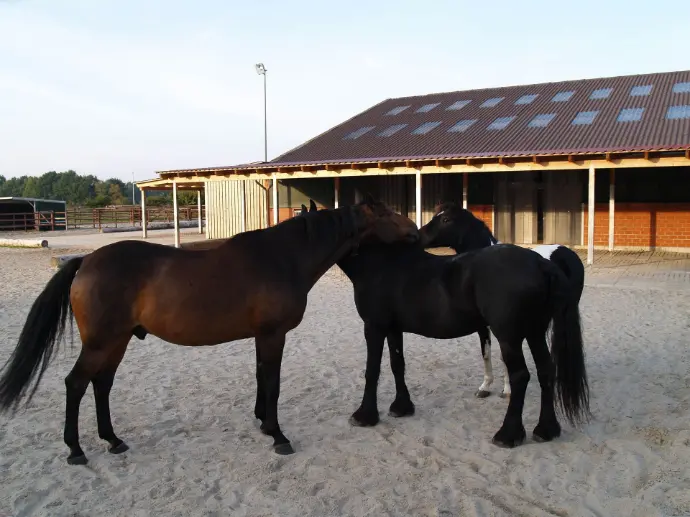What Is an Active Stable and Why Is It So Beneficial?
An Active Stable is a horse management system designed to meet the natural behavioural, social, and physiological needs of horses. Unlike traditional stabling, it offers horses freedom of movement, continuous access to forage and water, and opportunities to form strong herd bonds, all within a thoughtfully structured environment.
Natural Environment: Mimicking a horse’s natural living conditions supports gut health, hoof condition, and emotional well-being.
Welfare: Horses are happier and healthier when they can move, socialise, and graze throughout the day.
Performance: Physically and mentally healthier horses are more likely to perform better, with fewer behavioural issues or health setbacks.
Efficiency: Smart design and automation mean less time spent on manual tasks, reduced labour costs, and better resource management.
Understanding the Core Components of an Active Stable
Before embarking on your journey, it’s crucial to understand the primary elements of a successful Active Stable system:
Shelter and Flooring
A clean, dry, and comfortable shelter is vital. Use rubber matting, such as the Belmondo Basic and cushioned bedding, such as the HIT SoftBeds, to maintain hygiene and comfort, promoting rest and relaxation. Flooring in high-traffic areas such as feeding stations and gateways should also prioritise drainage and stability for year-round durability. Use mats such as the HIT Top Clean to create mud-free hardstanding areas that allow easy and continuous access without the worry of poaching.
Feeding Systems
Automated slow feeders and concentrate stations, such as the FFU Range, support horses' natural grazing habits and reduce herd competition, while allowing individualised diets. While these systems are an investment, they significantly reduce manual feeding time and waste.
Watering Systems
Access to fresh water is non-negotiable. Automatic drinkers, ideally insulated for year-round use like the La Buvette Range, provide constant clean water with minimal maintenance.
Outdoor Tracks and Trails
Encourage natural movement through strategically designed paddock tracks or trails. These should include rest areas, varied terrain, and separate locations for water and forage to stimulate foraging and exercise.
Budgeting for Your Active Stable Setup
For a turn key project, the average Active Stable investment per horse sits around £20,575 (based on 2022 data). However, depending on how much work you do yourself, the cost per horse could be as little as half this amount.
There are numerous variables that affect this figure: terrain, herd size, available infrastructure, and desired technology level. Setting a clear budget upfront and prioritising core components can help keep costs manageable.
To understand the costs in detail and develop a tailored plan, read our process on this page.
You can also book a free consultation with one of our experts.
How to Get Started
Starting small and scaling up is often the most economical route. Here’s how to approach your initial set-up:
Define the Perimeter: Map out a secure and logical perimeter, placing forage stations and water points around it to encourage movement.
Socialise the Herd: Introduce horses gradually, ensuring they are well-socialised and the group dynamics are stable. This foundation is essential for reducing stress.
Begin with Basics: Use manual feeding and watering systems if necessary, with the plan to upgrade. Once the set-up proves its value, invest in automated feeders and waterers to reduce ongoing labour.
This phased approach allows you to spread investment and learn what works best for your site and horses.
Top Tip! Book a consultation and plan the development of your stable. Good planning and optimal layouts saves you money and time in the long run.
Long-Term Benefits and Savings
An Active Stable not only improves horse welfare but also streamlines your operations:
Reduced Labour: Automation and optimised layouts drastically cut down daily chores.
Lower Vet Bills: Healthier, active, less stressed horses mean fewer injuries and illnesses.
Efficient Land Use: Keeping to a track and allowing ad lib paddock access helps with pasture management and reduces wear on any one area.
Over time, these efficiencies translate into significant savings and improved quality of life for both horses and staff. Your work life balance never needs to be a concern again.
Many operational Active Stables report that they spend around 5 minutes per horse per day on labour intensive activities such as feeding and poo picking.
How to Know Your Set-Up is Proving Successful
Knowing whether your Active Stable is working well comes down to both animal welfare and operational outcomes:
Horse Behaviour: Calm demeanours, strong herd bonding, and natural behaviours like roaming, grooming, and foraging are all positive signs.
Reduced Manual Labour: If you're spending less time on routine tasks and seeing improved efficiency, you're on the right track.
Cost Effectiveness: When operational expenses start to decline while horse health improves, your investment is clearly paying off.
As the equestrian industry becomes increasingly conscious of the importance of natural and welfare-oriented housing, systems like the Active Stable are poised to become increasingly popular. Owners and riders are seeking out environments that support horse health, behaviour, and performance, meaning those who invest early in such systems are likely to be at the forefront of this positive shift.
We've already seen this trend with track system liveries, many of which now operate at full capacity due to growing demand. An Active Stable not only positions you as a forward-thinking yard but could also lead to increased interest and a waiting list of liveries seeking healthier, more enriching living spaces for their horses.
Conclusion: Making Active Stable Accessible
Creating an Active Stable on a budget is not only possible, it’s practical. By understanding the essentials, planning strategically, and being open to phasing and adaptation, you can provide an enriching, efficient, and cost-effective environment for your horses.
With expert support from us, such as planning, consultation, and product guidance, your journey toward a better, more sustainable yard can start now.
